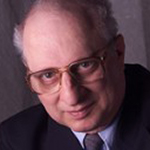February 21, 2017
Mental Health Care from Past to Present
At a session for the general public held on November 1, the Royal Ottawa Hospital's Psychiatrist in Chief Raj Bhatla gave a brief history of psychiatry, ending with a list of new treatments and trends.
He began with the 18th Century. Then, the mentally ill were identified as insane and incurable. They were, in Western Europe, subject to life-long incarceration in asylums.
The next step in treatment of the mentally ill, from the last part of the 19th Century on to the 20th, was the so-called moral treatment. It consisted in kindness toward the patients and attention to their special needs. This approach is linked to the name Philippe Pinel, a French physician who is often pictured removing the chains from inmates. The moral treatment included what today would be called occupational therapy, along with exercise, good food, and entertainment. This regimen was seen as curative, and in the 19th Century and early 20th, unreal rates of cure were claimed by asylums.
During the 19th Century, asylums proliferated. Overcrowding became a problem, and moral treatment often degenerated into custodial care. This situation continued on into the next century. Bhatla then jumped to the 1950’s, with the beginning of the pharmacological revolution in psychiatry.
In the 1950’s, we saw the development of neuroleptics, to treat symptoms of psychosis. The next decade saw the arrival of valium (diazepam), for anxiety, then lithium in the ‘70’s for bipolar disorder. Prozac, for major depression, was widely used in the 1980’s. Our present century saw the growth of human rights concerns about psychiatric treatment.
Bhatla then took a leap into the future, thinking of the possible impact of ketamine, which currently has been seen to have use with both depression and bipolar disorder, but only for short periods of time.
In his panoramic overview, Bhatla omitted a discussion of physical interventions. Shock therapy (electric, insulin, and other modalities) and psychosurgery (lobotomy). Both arose in the 1930’s. Electroshock went into decline beginning around 1960. The novel “One Flew Over the Cuckoo’s Nest” in 1962 and the film in 1975 marked the reaction against electroshock. However, the treatment is now seeing a recrudescence, following the development of new instruments delivering low-intensity shock. As for lobotomy, its use was at its height in the 1940’s, going into disrepute and disuse by 1960. Many patients undergoing the procedure turned out immature or robot-like.
With the rise of psychopharmacology, we saw the movement to deinstitutionalization. There has been a reliance on medication, with temporary hospitalization, both in psychiatric and general hospitals. At the same time there has been a rise in human rights concerns around treatment.
Unfortunately, as patients were emptied out of hospitals, the funding for their care did not follow them out into the community. As a result, there has been an increase in readmissions. With the release/ejection of patients, the pressure on the community has arisen.
Treatments today, Bhatla noted, may be varied and mixed. They may include medical treatment, psychotherapy, pharmacology, group therapy, self-management, and e-therapy (internet apps), the latter as at least an adjunct.
New trends include focus on culture and gender, as well as on independent and group thought. Attention is given to the stress induced in 24/7 living and communication. The West is now becoming aware of mindfulness, a technique with roots in past millennia, in Eastern religions. The practice has found its way into the Abrahamic religions and into New England transcendentalism. Everything old is new again.








